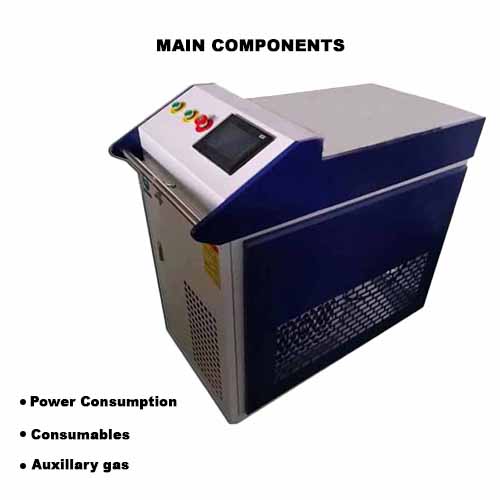The fiber laser welding machine is easily operated for personal and industrial welding needs. And, compared to traditional welding machines and MIG welding machines, it is 5–10 times faster and does resistance spot welding due to its inbuilt specifications. Here, you will get the main power output in 1 kw, 1.5 kw, and 2 kw. Further, machines’ main components include the overall power, consumables, and auxiliary gases.
Why the handheld welding machine is beneficial?
If you are using a handheld welding machine, you will get benefitted by many means. Here, are some of the listed points:
- You get faster speed upto 5to 10 times more than TIG
- Easy to learn and operate machine.
- It has a compact size and can be adjusted anywhere.
- Machine has minimal maintenance process.
- The welding quality over the material is of high-quality.
- On the highly reflective materials like copper, aluminum and similar others, it gives non-distortive, reformative and precise welding.
- The handheld welding machine heat-affected zone is minimal and it does not affected the conjoint areas of the material polished surfaces.
Calculating the Running cost
Before calculating the running cost of a handheld fiber laser welding machine. We need to understand its three parts: power consumption, consumables, and auxiliary gas. Similarly, every component has some associated cost, and based on those parameters, we need to calculate the final hourly cost.

Power Consumption
As, you know, we have the machine’s power output of 1 kw, 1.5 kw, and 2 kw available for the welding needs. So, here we see about the power output costings. 1kw peak power load is 7.5kw. The 1kw average power consumption is 4 unit when machine is run continuously. But in practical scenario machine run only 60% of the time, so the power consumption is 2.5 units(Rs 40) in one hour.
Consumables
The welding machine consumables includes nozzles and protective lens. And, costings comes around Rs 1000 per month. However, it runs for 200hours(approximately 15-20 days). So, here the per hour cost will come around lenses Rs.35
Auxillary gas
The protective gases for a welding machine is mainly Nitrogen (N2) and Argon. However, Argon can better work over the welding plates and can isolate the material surfaces from further oxidation and lenses from welding dusts. So, calculating the costings on that basis. Generally, the price of 6000 liters of gas is rs 800. In addition, it runs for almost 600-1200 minutes means for 20 hours. But, here it uses only 60% of gas, so the final running hours is around 16-32 hours. Hence, it uses Rs 40/hour of gas for its running operations.
Summary of cost
| Price distribution(per hour in Rs) | Units | Unit Cost | Total |
| Power consumption | 2.5 | 10 | Rs. 40 |
| Consumables | Misc | Misc | Rs 40 |
| Auxiliary gas | Misc | Misc | Rs. 40 |
| Total | – | – | Rs 120 |
In short: So, here we have successfully gotten an idea of hourly costing using a handheld welding machine. Additionally, we can finally draw a conclusion here on the power output of a welding machine and its associated costs in the future.
Reducing the further welding costs
1. Operational mistakes:
The operates needs to precisely be weld over the materials to reduce the further reworks.
2. Non-stop operations
Although, a welding machine can efficiently work for the continuous operations. However, you can pause the working process in between, so that its temperature could be maintained accordingly.
3. Good maintenance:
A well maintained machine has long-lifespan and can be operated for many years.
Summary
At last, we have calculated the overall cost of welding operations for one hour. So, here we learn about how we can minimise our total costs to reduce the final output and improve working efficiency. In addition, we can also opt for the correct machine’s power output for the handheld laser welding machine as per our usability preference.



